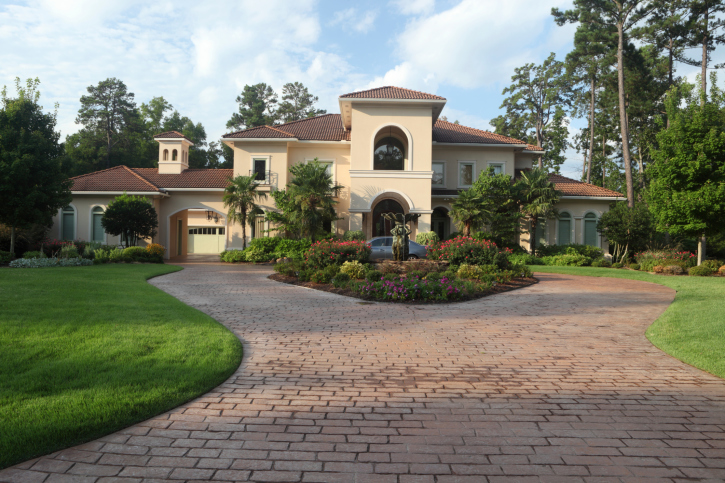Case-Shiller: Home Prices Continue to Outpace Inflation
 Denver, Colorado continues to woo homebuyers as home prices rose by 10.20 percent as of June according to the Case-Shiller 20-City Home Price Index. The Mile-High City was the only city included in the index that posted double-digit year-over-year growth in June. San Francisco, California posted a 9.50 percent year-over-year gain in home prices and Dallas, Texas rounds out the top three cities posting highest year-over-year home price growth with a reading of 8.20 percent.
Denver, Colorado continues to woo homebuyers as home prices rose by 10.20 percent as of June according to the Case-Shiller 20-City Home Price Index. The Mile-High City was the only city included in the index that posted double-digit year-over-year growth in June. San Francisco, California posted a 9.50 percent year-over-year gain in home prices and Dallas, Texas rounds out the top three cities posting highest year-over-year home price growth with a reading of 8.20 percent.
Denver’s home prices were impacted by the city’s rapidly expanding economy and demand for homes coupled with a slim supply of homes for sale. According to the National Association of Realtors®, there is approximately one month’s inventory of homes available in Denver as compared to the national average of five months.
Cities experiencing the least year-over-year growth in home prices according to the 20-City Home Price Index were Chicago, Illinois with a year-over-year growth rate of 1.40 percent, Washington D.C. with a year-over-year reading of 1.60 percent in home price growth and New York, New York with a reading of 2.80 percent growth in home prices year-over-year.
The 20-City Index indicated national home prices grew by five percent year-over-year in June, with a month-to-month increase of one percent from May to June.
Detroit Leads Gains in Month-to-Month Home Prices
Detroit, Michigan led month-over-month home price growth with a May to June reading of 1.80 percent. Cleveland, Ohio and Portland Oregon posted month-to-month gains of 1.50 percent followed by Atlanta, Georgia and Denver Colorado; each city posted month-to-month home price gains of 1.30 percent.
As economic conditions continue to improve, prospective homebuyers face obstacles including tight mortgage approval standards and home prices growing at approximately twice the rate of inflation.
FHFA: Home Prices Dip in June
The Federal Housing Finance Agency reported that home prices associated with mortgages owned or backed by Fannie Mae and Freddie Mac slipped to a year-over year growth rate of 5.60 percent in June as compared to May’s reading of 5.70 percent. The agency also reported that home prices rose by 1.20 percent during the second quarter of 2015; this was the sixteenth consecutive quarterly increase in home prices.
FHFA Principal Economist Andrew Leventis noted that home prices continued to exceed inflation and were rising in spite of higher mortgage rates.
In general, analysts regard longer term readings as more reliable than month-to-month readings that reflect more volatility based on day-to-day influences.
 Last week’s economic events included a number of readings on housing related topics. The National Association of Home Builders released its report on builder confidence in housing markets, Housing starts reached their highest level since the great recession, and existing home sales exceeded expectations and the prior month’s reading. The Federal Reserve released minutes for its most recent FOMC meeting, which indicated that while a majority of FOMC members are leaning toward raising the Fed’s target federal funds rate, concerns over certain aspects of the economy continue to keep the Fed from citing a date for raising its target interest rate.
Last week’s economic events included a number of readings on housing related topics. The National Association of Home Builders released its report on builder confidence in housing markets, Housing starts reached their highest level since the great recession, and existing home sales exceeded expectations and the prior month’s reading. The Federal Reserve released minutes for its most recent FOMC meeting, which indicated that while a majority of FOMC members are leaning toward raising the Fed’s target federal funds rate, concerns over certain aspects of the economy continue to keep the Fed from citing a date for raising its target interest rate. Last week’s scheduled economic reports included the Case-Shiller 20 and 20-City Index reports, pending home sales data released by the National Association of Realtors® and the scheduled post-meeting statement of the Federal Reserve’s Federal Open Market Committee.
Last week’s scheduled economic reports included the Case-Shiller 20 and 20-City Index reports, pending home sales data released by the National Association of Realtors® and the scheduled post-meeting statement of the Federal Reserve’s Federal Open Market Committee.